
Outpatient physical therapy provider U.S. Physical Therapy (NYSE: USPH) beat Wall Street’s revenue expectations in Q2 CY2025, with sales up 18% year on year to $197.3 million. Its non-GAAP profit of $0.81 per share was 16.7% above analysts’ consensus estimates.
Is now the time to buy U.S. Physical Therapy? Find out by accessing our full research report, it’s free.
U.S. Physical Therapy (USPH) Q2 CY2025 Highlights:
- Revenue: $197.3 million vs analyst estimates of $189.4 million (18% year-on-year growth, 4.2% beat)
- Adjusted EPS: $0.81 vs analyst estimates of $0.69 (16.7% beat)
- Adjusted EBITDA: $26.86 million vs analyst estimates of $24.69 million (13.6% margin, 8.8% beat)
- EBITDA guidance for the full year is $95 million at the midpoint, above analyst estimates of $91.14 million
- Operating Margin: 12.6%, in line with the same quarter last year
- Free Cash Flow Margin: 16%, similar to the same quarter last year
- Sales Volumes rose 16.7% year on year (5.4% in the same quarter last year)
- Market Capitalization: $1.09 billion
Chris Reading, Chief Executive Officer, said, “Volumes in our physical therapy business remain at record levels while we execute our plan for cost rationalization and improved efficiencies. Our injury prevention business continues a strong growth path, both organically and through carefully added acquisitions, which have broadened our service offerings and increased our exposure to new industry verticals. As a result of our efforts and expected progress we have updated our earnings guidance for the year.”
Company Overview
With a nationwide footprint spanning 671 clinics across 42 states, U.S. Physical Therapy (NYSE: USPH) operates a network of outpatient physical therapy clinics and provides industrial injury prevention services to employers across the United States.
Revenue Growth
Examining a company’s long-term performance can provide clues about its quality. Any business can put up a good quarter or two, but the best consistently grow over the long haul. Luckily, U.S. Physical Therapy’s sales grew at a decent 10.8% compounded annual growth rate over the last five years. Its growth was slightly above the average healthcare company and shows its offerings resonate with customers.
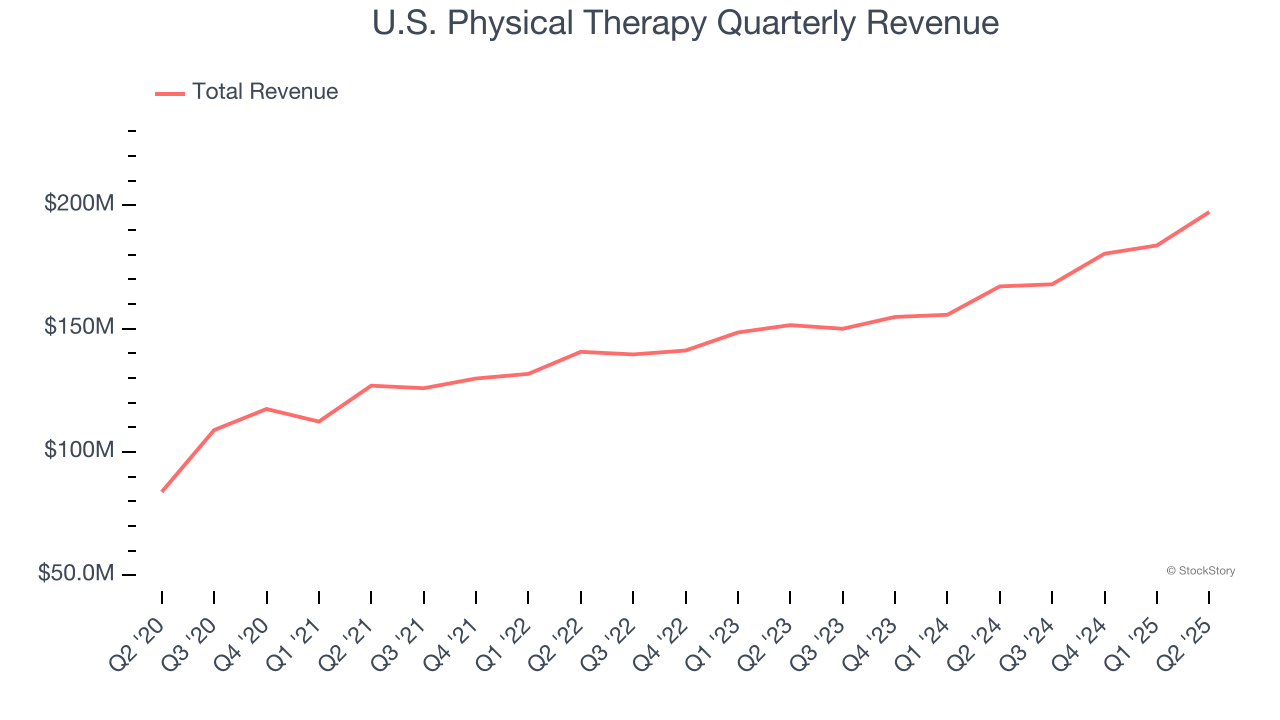
We at StockStory place the most emphasis on long-term growth, but within healthcare, a half-decade historical view may miss recent innovations or disruptive industry trends. U.S. Physical Therapy’s annualized revenue growth of 12.1% over the last two years is above its five-year trend, suggesting its demand recently accelerated. 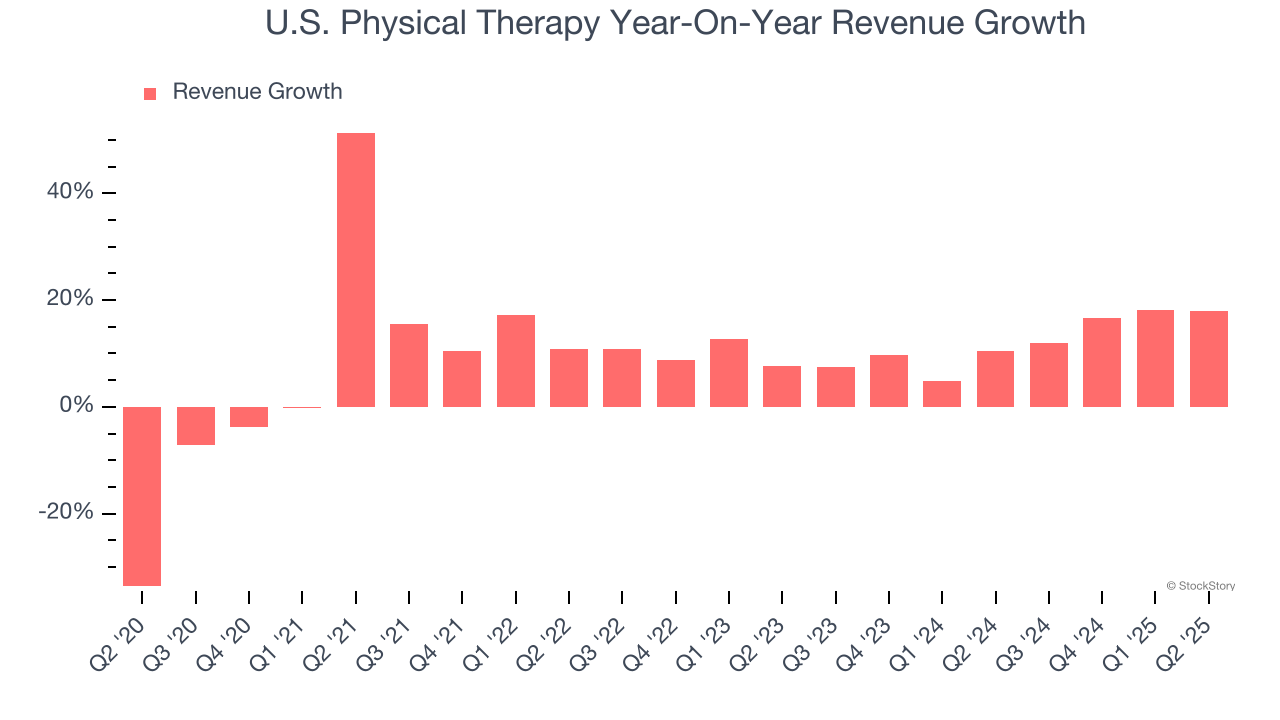
We can dig further into the company’s revenue dynamics by analyzing its number of patient visits, which reached 1.56 million in the latest quarter. Over the last two years, U.S. Physical Therapy’s patient visits averaged 9.9% year-on-year growth. Because this number is lower than its revenue growth, we can see the company benefited from price increases. 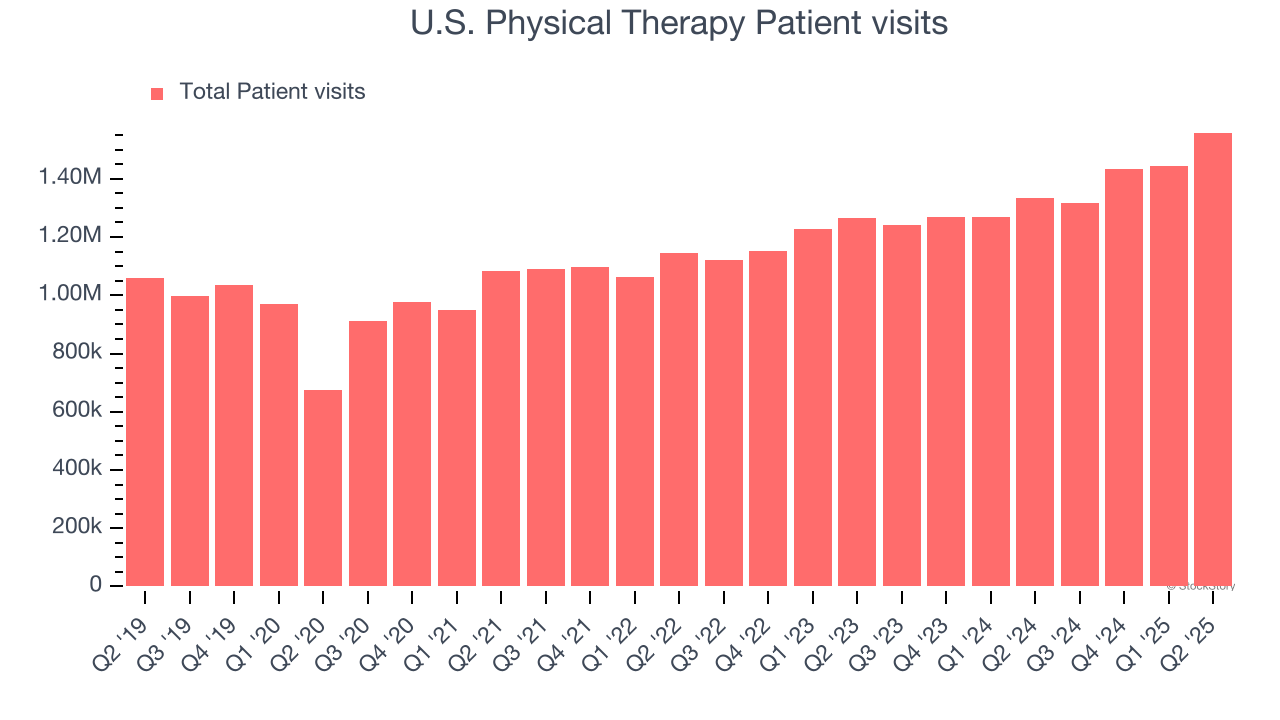
This quarter, U.S. Physical Therapy reported year-on-year revenue growth of 18%, and its $197.3 million of revenue exceeded Wall Street’s estimates by 4.2%.
Looking ahead, sell-side analysts expect revenue to grow 7.2% over the next 12 months, a deceleration versus the last two years. Despite the slowdown, this projection is above average for the sector and indicates the market is forecasting some success for its newer products and services.
Here at StockStory, we certainly understand the potential of thematic investing. Diverse winners from Microsoft (MSFT) to Alphabet (GOOG), Coca-Cola (KO) to Monster Beverage (MNST) could all have been identified as promising growth stories with a megatrend driving the growth. So, in that spirit, we’ve identified a relatively under-the-radar profitable growth stock benefiting from the rise of AI, available to you FREE via this link.
Operating Margin
U.S. Physical Therapy has done a decent job managing its cost base over the last five years. The company has produced an average operating margin of 11.1%, higher than the broader healthcare sector.
Analyzing the trend in its profitability, U.S. Physical Therapy’s operating margin decreased by 6.1 percentage points over the last five years. This raises questions about the company’s expense base because its revenue growth should have given it leverage on its fixed costs, resulting in better economies of scale and profitability.
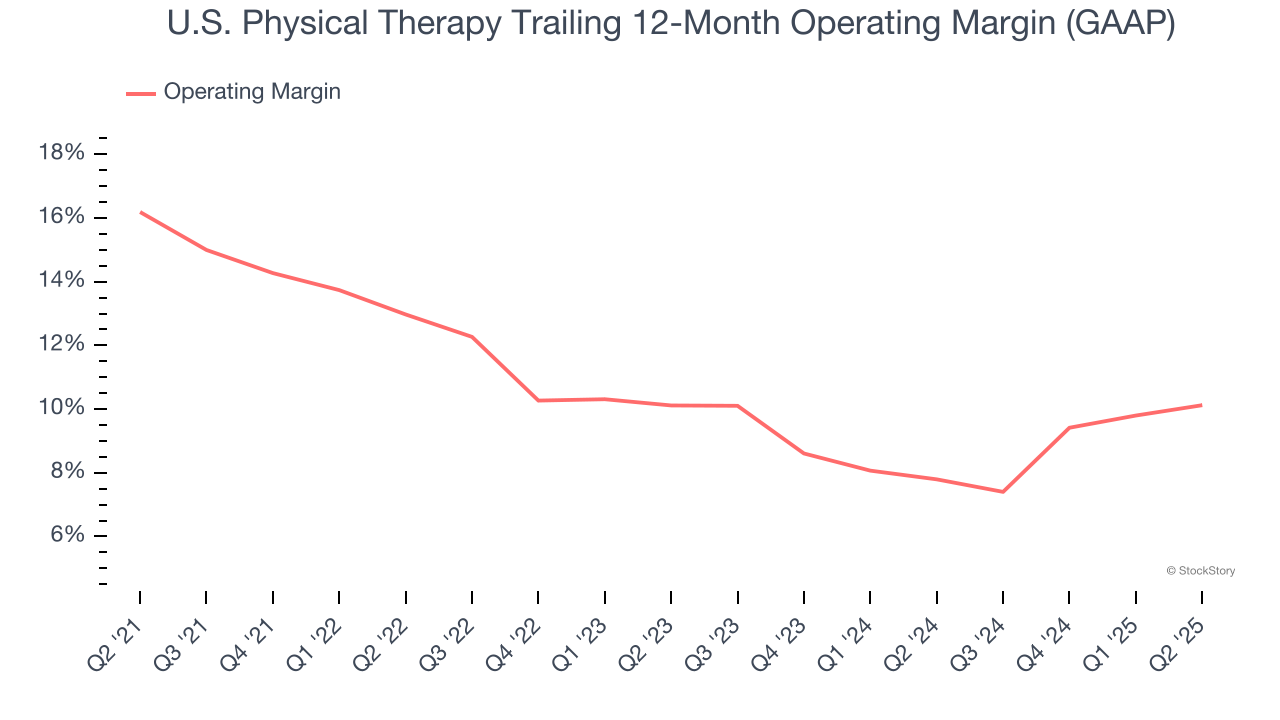
In Q2, U.S. Physical Therapy generated an operating margin profit margin of 12.6%, in line with the same quarter last year. This indicates the company’s overall cost structure has been relatively stable.
Earnings Per Share
We track the long-term change in earnings per share (EPS) for the same reason as long-term revenue growth. Compared to revenue, however, EPS highlights whether a company’s growth is profitable.
U.S. Physical Therapy’s EPS grew at an unimpressive 4% compounded annual growth rate over the last five years, lower than its 10.8% annualized revenue growth. This tells us the company became less profitable on a per-share basis as it expanded.
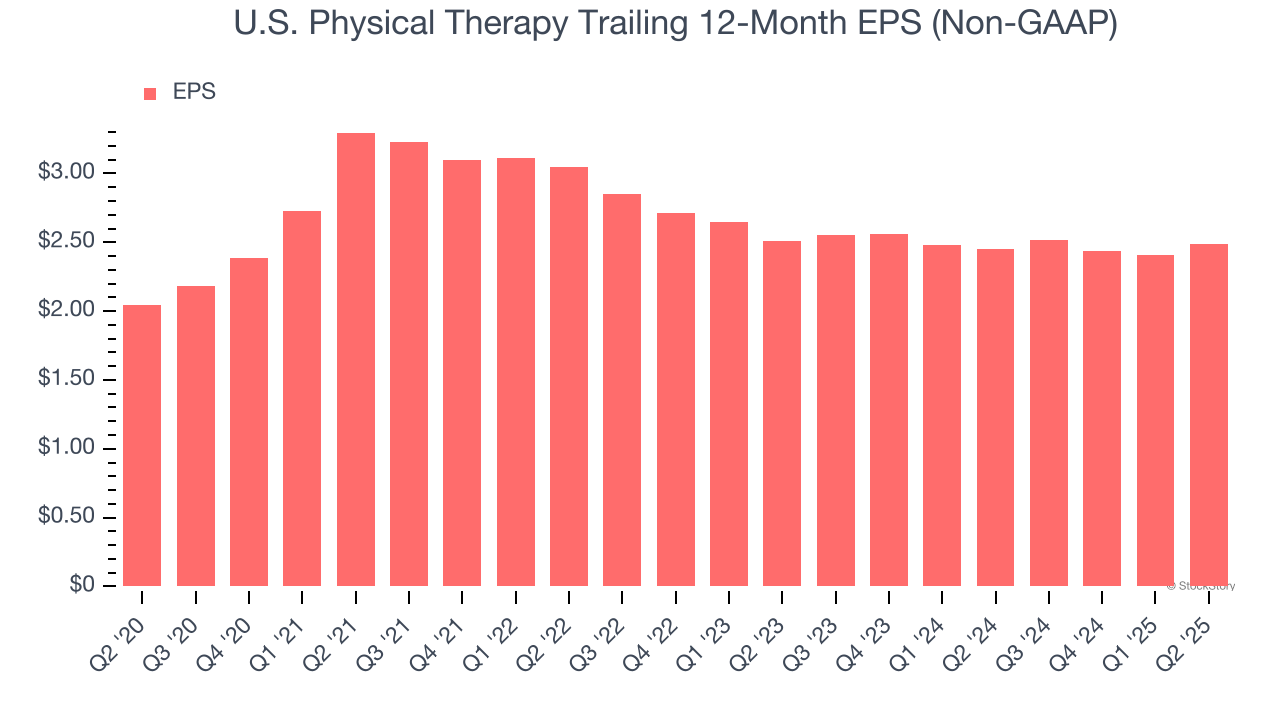
We can take a deeper look into U.S. Physical Therapy’s earnings to better understand the drivers of its performance. As we mentioned earlier, U.S. Physical Therapy’s operating margin was flat this quarter but declined by 6.1 percentage points over the last five years. Its share count also grew by 18.3%, meaning the company not only became less efficient with its operating expenses but also diluted its shareholders. 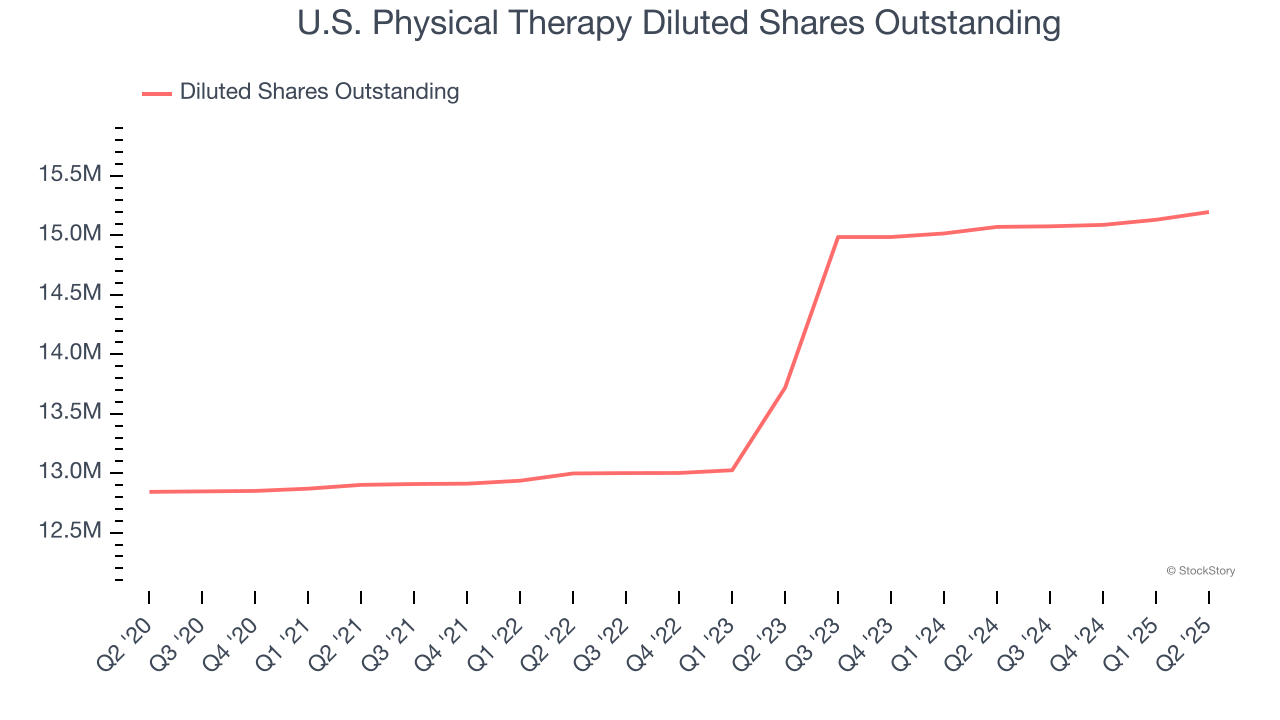
In Q2, U.S. Physical Therapy reported adjusted EPS at $0.81, up from $0.73 in the same quarter last year. This print easily cleared analysts’ estimates, and shareholders should be content with the results. Over the next 12 months, Wall Street expects U.S. Physical Therapy’s full-year EPS of $2.49 to grow 4.3%.
Key Takeaways from U.S. Physical Therapy’s Q2 Results
We were impressed by how significantly U.S. Physical Therapy blew past analysts’ sales volume expectations this quarter. We were also glad its revenue outperformed Wall Street’s estimates. Zooming out, we think this was a solid print. The stock remained flat at $72.69 immediately after reporting.
So should you invest in U.S. Physical Therapy right now? What happened in the latest quarter matters, but not as much as longer-term business quality and valuation, when deciding whether to invest in this stock. We cover that in our actionable full research report which you can read here, it’s free.






